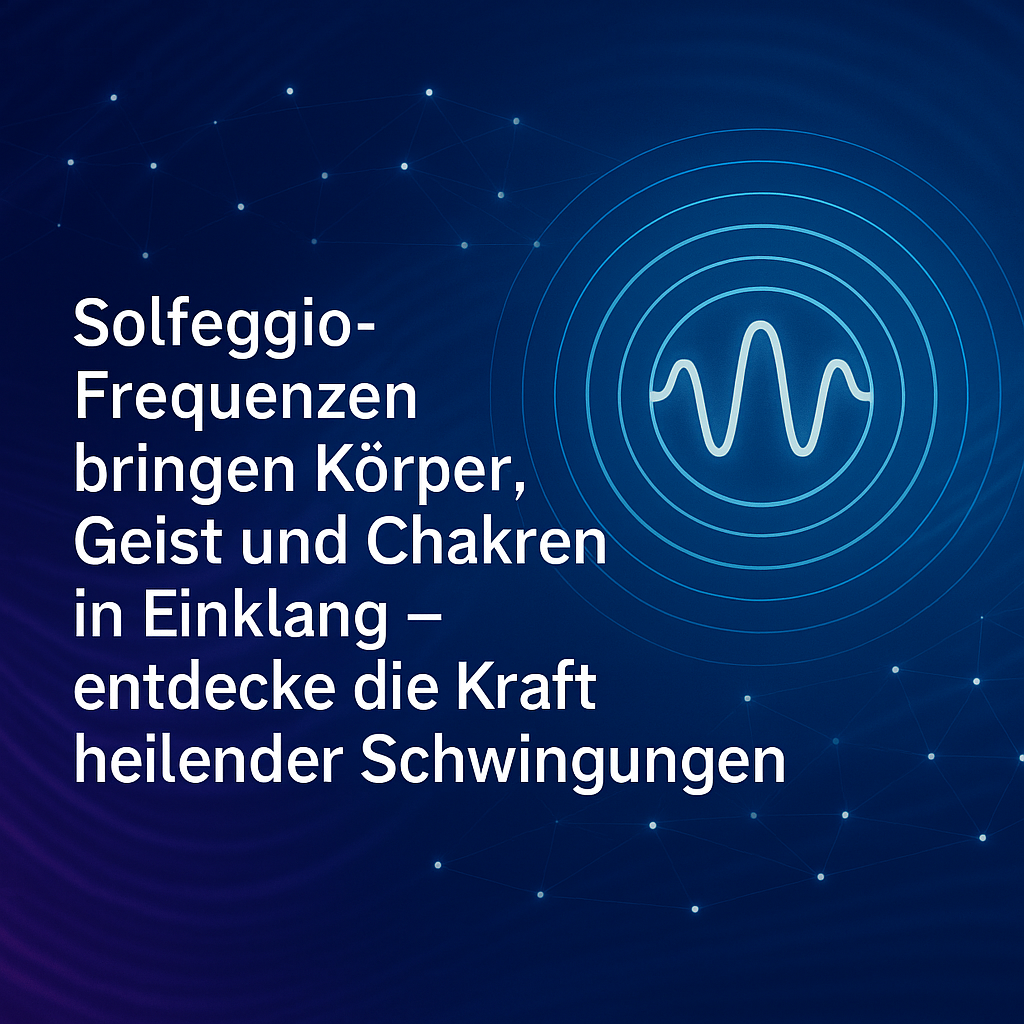
Solfeggio frequencies - Healing vibrations for body, mind and chakras
Introduction: Everything is vibration
Albert Einstein once said:
"Everything in the universe is vibration."
This thought forms the basis for the use of Solfeggio frequencies: With targeted sound frequencies between 174 Hz and 963 Hz, they are said to help alleviate physical ailments, release emotional blockages and promote spiritual processes.
What are solfeggio frequencies?
Solfeggio frequencies are special vibration patterns that are assigned to certain healing effects.
| Frequency (Hz) | Effect |
|---|---|
| 174 | Pain relief, muscle relaxation, stress reduction |
| 285 | Cell regeneration, tissue healing, immune boosting |
| 396 | Release of guilt, anxiety, root chakra strengthening |
| 417 | Trauma management, change, sleep support |
| 432 | Heart coherence, stress reduction, earth resonance |
| 528 | DNA healing, creativity, joie de vivre |
| 639 | Relationship healing, communication, heart chakra |
| 741 | Detoxification, cleansing, harmony |
| 852 | Intuition, clarity, connection to the higher self |
| 963 | Spiritual awakening, crown chakra activation |
Solfeggio frequencies and chakras
Each frequency corresponds to an energy centre of the body:
- 396 Hz - Root chakra (Muladhara): Basic trust, stability
- 417 Hz - Sacral chakra (Svadhisthana): Emotional healing, creativity
- 528 Hz - Solar plexus (Manipura): Self-confidence, clarity
- 639 Hz - Heart chakra (Anahata): Love, compassion
- 741 Hz - Throat chakra (Vishuddha): Expression, communication
- 852 Hz - Forehead chakra (Ajna): Intuition, realisation
- 963 Hz - Crown chakra (Sahasrara): Spirituality, unity
Application tips
- Place: Quiet, undisturbed
- Position: Sitting or lying in a relaxed position
- Volume: Low to moderate
- Duration: Ideal for meditation, relaxation or before sleep
- Regularity: Recommended daily
Difference to binaural beats
Solfeggio: Single tone frequencies with a direct effect.
Binaural beats: Two slightly different tones that create a third in the brain.
Historical background: Pythagoras and sound medicine
Pythagoras already used music to heal mental states and recognised the effect of harmonious sounds on the mind and body. His "musical medicine" is continued today through modern sound therapies such as Solfeggio frequencies.
Conclusion
Whether scientifically recognised or not, Solfeggio frequencies are used worldwide for healing, relaxation and expansion of consciousness. Those who listen to them regularly can experience a profound effect on body, mind and soul.
